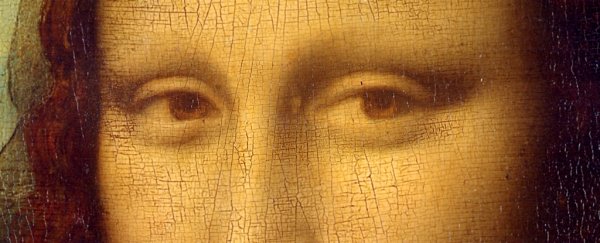You may have heard of the Mona Lisa effect, or even felt her famous, haunting gaze yourself.
If you're not familiar, the idea is that the eyes in the iconic painting follow you around the room wherever you stand. A new study has found that the effect can be backed up by science – but we might need to rename it, as it doesn't seem to actually apply to… er, Mona Lisa.
Scientists set up an experiment where 24 participants were put in front of computer images of the Mona Lisa and asked to judge which direction she was looking in. Using different crops of the picture and varying distances, over 2,000 assessments were gathered, with the help of a ruler placed between the viewer and the picture.
Ultimately, the team from Bielefeld University in Germany found that the figure in the 16th century masterpiece wasn't actually looking straight ahead – as would be required for the Mona Lisa effect – but rather to the right-hand side, at a demure angle of 15.4 degrees.
"The effect itself is undeniable and demonstrable," says one of the researchers, psychologist Sebastian Loth. "But with the Mona Lisa, of all paintings, we didn't get this impression."
Central to the study is the idea that a person depicted in an image needs to be staring almost straight ahead, at an angle of zero degrees, to maintain the viewer's perception of being followed around the room, even though the eyes in the picture don't change. As a result, Mona Lisa is technically disqualified from the effect that bears her name.
Previous research on the phenomenon suggests that a gaze angle under 5 degrees is required to keep up the illusion that we're being watched by someone in a painting or a photograph. It doesn't matter where the viewer stands, but it does matter where the subject of the picture is looking.
"This impression emerges if we stand to the left or right and at different distances from the image," says Loth. "The robust sensation of 'being looked at' is precisely the Mona Lisa effect."
That the participants in the new study consistently identified Mona Lisa's gaze as veering to the right, across several different zoom levels and image crops, suggests her eyes may not be following you as closely as you might have thought if you'd been to the Louvre in Paris (or seen a replication of the famous artwork elsewhere).
In fact that feeling of being watched sometimes says as much about us as it does about what we're looking at, according to the researchers behind the new study.
"People are very good at gauging whether or not they are being looked at by others," says one of the team, Gernot Horstmann. "Perceptual psychology demonstrated this in the 1960s."
"[The Mona Lisa effect] illustrates the strong desire to be looked at and to be someone else's centre of attention – to be relevant to someone, even if you don't know the person at all."
The research is about more than tackling one of the most well-known optical illusions in the art world. One area where it could be helpful is in the design of computer simulations or video games, anywhere where digital characters are being created.
Virtual avatars can use what we know about gaze, and holding someone's gaze, to engage with the player and make subtle prompts, just like a human would. That's going to be even more important as virtual reality worlds become more sophisticated.
For the time being, though, the official scientific verdict is that no, Mona Lisa isn't watching you all the time – even though the Mona Lisa effect itself is very real.
"We asked for metric judgments, which are less prone to conflict with any beliefs than the binary judgement of being looked at," explain the researchers.
"We conclude from the measurements that the lack of evidence is due to the claim being objectively false: Mona Lisa does not gaze at the viewer."
Perhaps next the researchers could investigate another legendary quality of this painting – that slight Mona Lisa smile, which seems to be always shifting depending on the angle it's viewed at. Maybe she knew the debate her portrait would stir up all along…
The research has been published in i-Perception.
